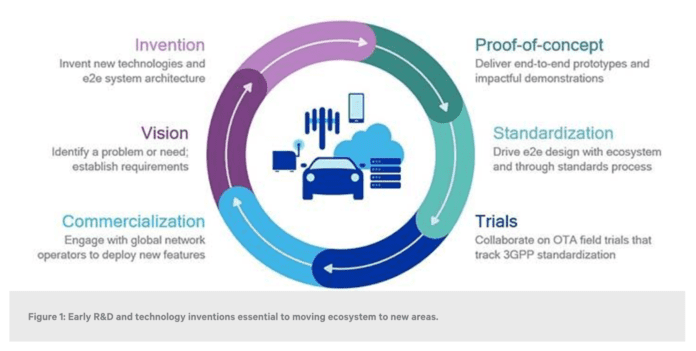How to ascertain leadership in 3GPP; quality vs. quantity of technical contributions
Established in 1998, the Third Generation Partnership Project (3GPP) united seven organizational partners into one group that works on telecommunications technological specifications that broadly cover radio access networks, services and systems, and core networks and terminals. Since its inception, the group has driven the telecom industry from GSM to UMTS and HSPA, onto LTE, and is now working to define 5G New Radio.
The organizational and working structure of 3GPP, particularly from an outsider’s perspective, can be somewhat closed and obtuse, albeit fundamentally important to the broader telecom industry. To get a better idea of how the group functions, RCR Wireless News spoke with Qualcomm Director of Technical Standards Lorenzo Casaccia, who leads the U.S.-based company’s team of engineers that work within 3GPP to inform the evolution of communications systems. In a recent four-part series of blogs–available here, here, here and here–Casaccia provided a detailed look at 3GPP with an emphasis on how to evaluate technical contributions and, from a broader perspective, ascertain the group’s internal leadership structure.
Casaccia wrote in detail about the quantity versus quality of technical contributions to 3GPP, seen by some as a key determinant of leadership, but, before getting into that subject, we wanted to know why it’s important at all to gauge leadership in an egalitarian, consortium environment.
“There is a natural tendency, a human curiosity,” he said. “People want to know who is leading, who is winning. It is part of human nature. It’s fair to say that Qualcomm has seen the activity in technology…as a proxy to technology leadership. Technology standards play a very unique role in this industry. The telecommunications industry is based on standards in a way that doesn’t have an equal in any other engineering industry. If you’re building cars and you come up with some invention by which your car is burning 1000-times less fuel than any other car, you can put it on the market and wipe out the competition. In telecommunications, for the first part, innovation has to go through standards. There has to be a common language that everybody speaks for the technology to go forward. This is a very unique characteristic of this industry.”
To the quantity versus quality question, Casaccia intoned that some companies will take technical contribution submissions and split the work into multiple pieces in the interest of tallying a higher number of overall contributions–sort of like an incentive program you might associate with a sales-driven organization.
“That’s where we have fundamental disagreements,” he said. “Standards are not based on acceptance or rejection of contributions. Contributions are noted. Then the ideas accumulate, then, over time, generate the technology. There is no quality control. You can submit what you want. If you have a paper and your if your goal is to maximize the number of contributions, you split your input into multiple papers. That’s it. You’ve achieved the goal of submitting more papers. This is an interesting phenomenon. Our overall theme in all of this is to really give a strong stance on the fact that contribution counting is not measure of influence.”
In the 3GPP working process, any member company can reject any other member companies’ submissions. So, why isn’t this mechanism exploited to protect proprietary interests?
“There is a competitive aspect to 3GPP,” Casaccia acknowledged. “To make a very simple example, people have to decide on details of channel coding, which is a very elegant part of telecommunications. Other companies have to be able to replicate those results. And the process goes on and on, at the end of which, the best performing one wins. Yes, people could continue to object or try to reject even the best performing one, but there is a kind of meta layer of agreement where all companies, even those that are very fiercely competing with each other, do agree that progress is good. This is a very fundamental aspect that we didn’t dwell upon in the blog posts. Everybody agrees that we eventually have to move forward. We all think we have the ability to do a 5G standard better than anyone else, but eventually everyone agrees that we have to have a standard.”

